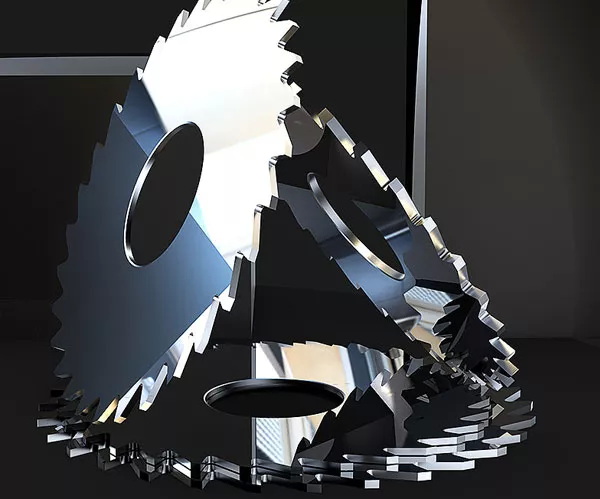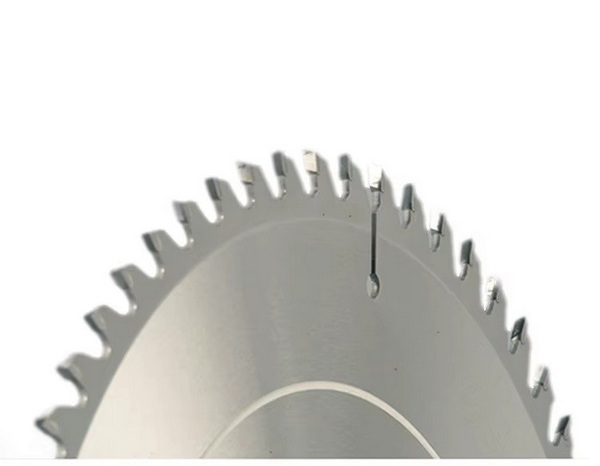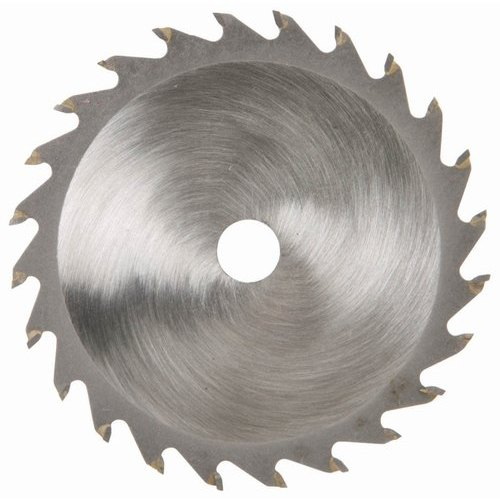Content Menu
● Introduction
● What are Carbide Saw Tips?
>> Why Use Carbide Saw Tips?
● Overview: Tungsten Carbide vs. Titanium Carbide
>> Tungsten Carbide Saw Tips
>> Titanium Carbide Saw Tips
>> Comparison Table
● Material Properties Comparison
>> Composition & Microstructure
>> Mechanical Properties
● Performance in Cutting Applications
>> Tungsten Carbide Saw Tips
>> Titanium Carbide Saw Tips
● Wear, Corrosion, and Temperature Resistance
>> Wear Resistance
>> Corrosion Resistance
>> Temperature Stability
● Cost and Longevity
>> Pricing
>> Tool Life
● How to Choose the Right Carbide Saw Tip
● Popular Applications
● Additional Considerations for OEM Manufacturers
● Conclusion
● FAQ
>> 1. What are the main advantages of carbide saw tips compared to steel tips?
>> 2. When should I choose titanium carbide saw tips over tungsten carbide?
>> 3. Are carbide saw tips suitable for cutting both wood and metal?
>> 4. What are the disadvantages of titanium carbide saw tips?
>> 5. How can I ensure I'm sourcing the best quality carbide saw tips for OEM use?
Introduction
In modern manufacturing, woodworking, metal cutting, and construction, the quality and durability of saw blades are the foundation of efficient operations. At the heart of these blades are carbide saw tips, which play a decisive role in both performance and cost-effectiveness. As a premium Chinese OEM manufacturer of stainless steel capillary tubes, coils, sheets, pipes, and carbon steel materials, we understand the importance of selecting the right saw tip for your needs. Among the various types available, tungsten carbide and titanium carbide saw tips stand out as the most widely used and debated.
This article provides an in-depth comparison of these two carbide saw tips, exploring their composition, performance, applications, pros and cons, and key factors in selection. Alongside technical details, you'll find helpful explanations to enhance understanding and assist your purchasing decisions. We will cover everything from microscopic material properties to practical worksite applications, helping you grasp why the best carbide saw tip matters for your operation.

What are Carbide Saw Tips?
Carbide saw tips are small, extremely hard inserts brazed or welded onto the teeth of saw blades. These tips are engineered from advanced composites such as tungsten carbide or titanium carbide to optimize wear resistance, toughness, cutting speed, and overall durability far beyond conventional steel.
Why Use Carbide Saw Tips?
Carbide tips enable blades to maintain sharpness much longer than steel alone, decreasing downtime associated with frequent sharpening or tip replacement. They also resist chipping and cracking during aggressive cuts, allowing faster and cleaner work on hardwoods, metals, plastics, and composite materials. As a result, carbide saw tips significantly improve cutting precision and productivity, even under heavy industrial use.
Overview: Tungsten Carbide vs. Titanium Carbide
Tungsten Carbide Saw Tips
Tungsten carbide (WC) is a composite material made mainly of tungsten and carbon, combined with a metal binder such as cobalt. It has become the industry standard for saw tips due to its remarkable balance of hardness and toughness.
- Hardness: Ranges from approximately 1,700 to 2,200 Vickers Hardness (HV), making it highly wear-resistant.
- Wear resistance: Suitable for cutting a wide range of materials including wood, ferrous metals, and abrasive composites.
- Toughness: The cobalt binder enhances shock resistance, reducing the likelihood of chipping under impact.
- Thermal conductivity: Capable of dispersing heat effectively, which helps maintain tip integrity at elevated cutting speeds.
Titanium Carbide Saw Tips
Titanium carbide (TiC) contains titanium, carbon, and a metal binder but differs in composition and microstructure from tungsten carbide. It delivers even higher hardness and wear resistance.
- Very high hardness: Typically between 2,400 and 3,000 HV, surpassing the hardness of common tungsten carbide grades.
- Superior wear and corrosion resistance: Particularly suitable for harsh and abrasive environments.
- Heat and oxidation resistance: Performs well in applications that generate high friction and temperatures.
- Applications: Ideal for cutting abrasive or corrosive materials in industrial, marine, or chemical contexts.
Comparison Table
| Property | Tungsten Carbide Saw Tips | Titanium Carbide Saw Tips |
| Hardness (HV) | 1,700–2,200 | 2,400–3,000 |
| Wear Resistance | High | Very High |
| Corrosion Resistance | Good | Excellent |
| Toughness | Moderate | Lower than WC |
| Thermal Stability | Good | Excellent |
| Suitable For | General cutting, wood, metal | Abrasive/corrosive/high-temp |
Material Properties Comparison
Composition & Microstructure
The core difference between tungsten carbide and titanium carbide saw tips lies in their chemical makeup and how the materials respond to stress and wear.
- Tungsten Carbide: Composed mainly of tungsten carbide grains bonded by a cobalt matrix, the combination offers an excellent balance of hardness and toughness. The cobalt binder is crucial for impact resistance, enabling the tips to withstand sudden shocks like unintended nail strikes.
- Titanium Carbide: Contains titanium carbide grains bound with a metallic binder (usually nickel or cobalt). The structure is more brittle due to the lower binder content, but the grains themselves are harder and more chemically stable. This makes TiC tips more resistant to abrasion and corrosion but less impact-tolerant.
Mechanical Properties
| Property | Tungsten Carbide | Titanium Carbide |
| Compressive Strength | 4,000–7,000 MPa | 4,500–7,500 MPa |
| Density | ~15 g/cm³ | ~4.9 g/cm³ |
| Edge Retention | Excellent | Superior |
| Brittleness | Moderate | Higher |
The higher brittleness of titanium carbide means it can chip more easily under impact, requiring careful handling—especially in environments with sudden mechanical shocks.
Performance in Cutting Applications
Tungsten Carbide Saw Tips
These tips excel in general-purpose cutting where a balanced combination of toughness and hardness is required. They perform well on soft to medium-hard woods, ferrous and non-ferrous metals, plastics, and composites. Thanks to their toughness, they handle occasional contact with embedded nails or metallic objects in wood without significant damage.
Typical cutting applications include:
- Furniture manufacturing
- General metal fabrication
- Construction materials such as plywood and MDF
Titanium Carbide Saw Tips
Titanium carbide offers superior abrasion and corrosion resistance, making it the top choice for specialized cutting tasks where conventional tungsten carbide tips wear out quickly.
Ideal cutting conditions include:
- Abrasive materials like fiber cement, hard plastics with fillers, and synthetic composites
- Environments exposed to corrosive agents such as saltwater or chemicals
- High-speed cutting operations generating substantial heat, such as industrial metal sheet cutting
TiC tips excel in applications requiring long tool life and high precision under extreme conditions.

Wear, Corrosion, and Temperature Resistance
Wear Resistance
Carbide tips encounter constant abrasive forces during cutting. Tungsten carbide saw tips stand up well in most environments, while titanium carbide tips boast a significantly enhanced wear resistance due to the inherent hardness of TiC grains.
This difference means TiC tips maintain sharpness much longer in abrasive tasks, reducing the need for blade replacement or regrinding.
Corrosion Resistance
Tungsten carbide performs adequately in non-aggressive environments but may suffer degradation when exposed to acidic, chlorinated, or saltwater conditions. Titanium carbide saw tips excel in resisting corrosion, which extends their usability in marine, chemical processing, and outdoor industrial settings.
Temperature Stability
Cutting generates frictional heat that can damage blade tips over prolonged use. Titanium carbide's high melting point and ability to withstand oxidation make it better suited for elevated temperature operations, preventing tip degradation and maintaining cutting performance.
Cost and Longevity
Pricing
Tungsten carbide saw tips benefit from large-scale production and established supply chains, making them more affordable for mainstream use. The relative abundance of raw materials and years of optimization reduce unit costs.
Titanium carbide saw tips, however, involve more complex manufacturing processes and raw materials with higher costs, leading to a higher upfront price. They represent a long-term investment for applications where durability and resistance to harsh conditions save significant maintenance and downtime expenses.
Tool Life
The useful life of carbide tips depends largely on application-specific factors. Tungsten carbide tips last sufficiently long in most woodworking and metal cutting fields, providing excellent return on investment.
For environments with abrasive dust, corrosion risks, or high-speed metal cutting, titanium carbide tips often outlast tungsten carbide. Although initially more expensive, their longevity and reduced downtime can justify the cost for demanding industrial uses.
How to Choose the Right Carbide Saw Tip
Selecting the appropriate carbide saw tip requires careful evaluation of multiple factors:
1. Material to Cut: For typical woodworking, ferrous and non-ferrous metals, tungsten carbide tips provide the best combination of toughness and wear resistance. For abrasive composites, corrosive, or high-temp environments, titanium carbide is preferable.
2. Cutting Speed: Both types allow faster cutting than steel, but titanium carbide performs better at high temperatures, making it more suitable for high-speed metal working.
3. Cost vs. Application Needs: Tungsten carbide offers a cost-effective solution for most uses. Titanium carbide, being pricier, benefits specialized applications with heavy abrasion or corrosion exposure.
4. Durability Requirements: For longest tool life under extreme conditions, titanium carbide provides unmatched resistance.
5. Maintenance Frequency: Choosing the right tip can extend the interval between necessary blade sharpening or replacement, saving labor and materials costs.
6. OEM or Specific Performance Needs: OEM manufacturers should fine-tune carbide tip choice based on customer requirements and intended use cases to optimize blade effectiveness.
Popular Applications
| Application | Recommended Tip |
| General Wood Cutting | Tungsten Carbide |
| Cutting Ferrous Metals | Tungsten Carbide |
| Cutting Abrasive Materials | Titanium Carbide |
| Chemical/Marine Environments | Titanium Carbide |
| High-Speed Metal Cutting | Both (TiC for extreme) |
Additional Considerations for OEM Manufacturers
As a factory providing OEM solutions for stainless steel capillary tubes, carbon steel materials, and high-precision products, our quality standards demand the best fusion of material science and performance reliability. Working with trusted suppliers of tungsten and titanium carbide, along with employing precision brazing or welding processes, ensures the carbide saw tips we integrate meet or exceed global market benchmarks.
We advise OEM partners to focus also on:
- Quality certifications for raw materials
- Uniform carbide grain size to enhance wear resistance
- Rigorous thermal treatment to improve tip bonding and toughness
- Custom tip geometries for optimum cutting parameters
This holistic approach guarantees end products deliver maximum value in exacting overseas markets for different industries.
Conclusion
The choice between tungsten carbide and titanium carbide saw tips is pivotal for manufacturers, OEM suppliers, and industrial users seeking optimal blade performance and longevity. Tungsten carbide remains the industry favorite for its remarkable balance of hardness, toughness, and value—delivering exceptional results in most woodworking and general metal cutting tasks. Titanium carbide, while more brittle and costly, excels in extreme environments demanding superior hardness, corrosion, and heat resistance.
Therefore, aligning the choice of carbide saw tip with application-specific cutting conditions, material properties, and cost structure is essential. Leveraging a trusted OEM partner ensures the procurement of premium saw tips tailored to your production demands, ultimately enhancing cutting quality, productivity, and long-term industrial success.

FAQ
1. What are the main advantages of carbide saw tips compared to steel tips?
Carbide saw tips offer far greater hardness, wear resistance, and cutting speed, resulting in far less frequent sharpening, longer blade life, and cleaner cuts on tough materials.
2. When should I choose titanium carbide saw tips over tungsten carbide?
Select titanium carbide tips for cutting extremely abrasive, corrosive, or high-heat materials, such as fiber cement, saltwater-exposed woods, or in industrial chemical settings.
3. Are carbide saw tips suitable for cutting both wood and metal?
Yes, both tungsten carbide and titanium carbide saw tips are engineered to cut wood, non-ferrous, and ferrous metals, as well as plastics and composite materials. Choose grade and tip geometry for best results on each material.
4. What are the disadvantages of titanium carbide saw tips?
While extremely hard and resistant to wear and corrosion, titanium carbide saw tips are more brittle and expensive than tungsten carbide, and may chip more easily if mishandled or subjected to strong impacts.
5. How can I ensure I'm sourcing the best quality carbide saw tips for OEM use?
Work with an experienced factory using high-purity raw carbide, precision brazing or welding processes, and tight quality control. Request lab test data and performance guarantees on every batch delivered.
















